Emily Sumner
Shared Autonomy for Proximal Teaching
Feb 27, 2025Abstract:Motor skill learning often requires experienced professionals who can provide personalized instruction. Unfortunately, the availability of high-quality training can be limited for specialized tasks, such as high performance racing. Several recent works have leveraged AI-assistance to improve instruction of tasks ranging from rehabilitation to surgical robot tele-operation. However, these works often make simplifying assumptions on the student learning process, and fail to model how a teacher's assistance interacts with different individuals' abilities when determining optimal teaching strategies. Inspired by the idea of scaffolding from educational psychology, we leverage shared autonomy, a framework for combining user inputs with robot autonomy, to aid with curriculum design. Our key insight is that the way a student's behavior improves in the presence of assistance from an autonomous agent can highlight which sub-skills might be most ``learnable'' for the student, or within their Zone of Proximal Development. We use this to design Z-COACH, a method for using shared autonomy to provide personalized instruction targeting interpretable task sub-skills. In a user study (n=50), where we teach high performance racing in a simulated environment of the Thunderhill Raceway Park with the CARLA Autonomous Driving simulator, we show that Z-COACH helps identify which skills each student should first practice, leading to an overall improvement in driving time, behavior, and smoothness. Our work shows that increasingly available semi-autonomous capabilities (e.g. in vehicles, robots) can not only assist human users, but also help *teach* them.
Dreaming to Assist: Learning to Align with Human Objectives for Shared Control in High-Speed Racing
Oct 14, 2024Abstract:Tight coordination is required for effective human-robot teams in domains involving fast dynamics and tactical decisions, such as multi-car racing. In such settings, robot teammates must react to cues of a human teammate's tactical objective to assist in a way that is consistent with the objective (e.g., navigating left or right around an obstacle). To address this challenge, we present Dream2Assist, a framework that combines a rich world model able to infer human objectives and value functions, and an assistive agent that provides appropriate expert assistance to a given human teammate. Our approach builds on a recurrent state space model to explicitly infer human intents, enabling the assistive agent to select actions that align with the human and enabling a fluid teaming interaction. We demonstrate our approach in a high-speed racing domain with a population of synthetic human drivers pursuing mutually exclusive objectives, such as "stay-behind" and "overtake". We show that the combined human-robot team, when blending its actions with those of the human, outperforms the synthetic humans alone as well as several baseline assistance strategies, and that intent-conditioning enables adherence to human preferences during task execution, leading to improved performance while satisfying the human's objective.
Computational Teaching for Driving via Multi-Task Imitation Learning
Oct 02, 2024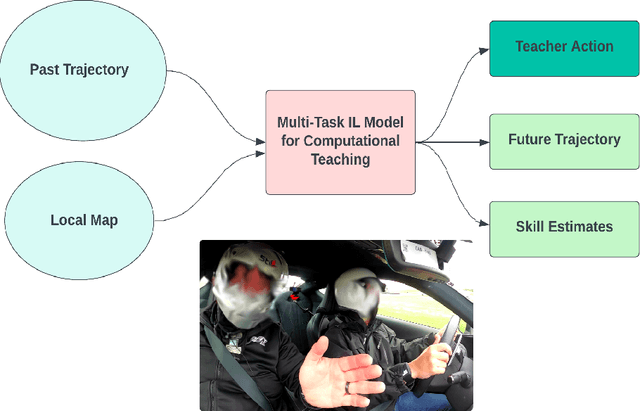
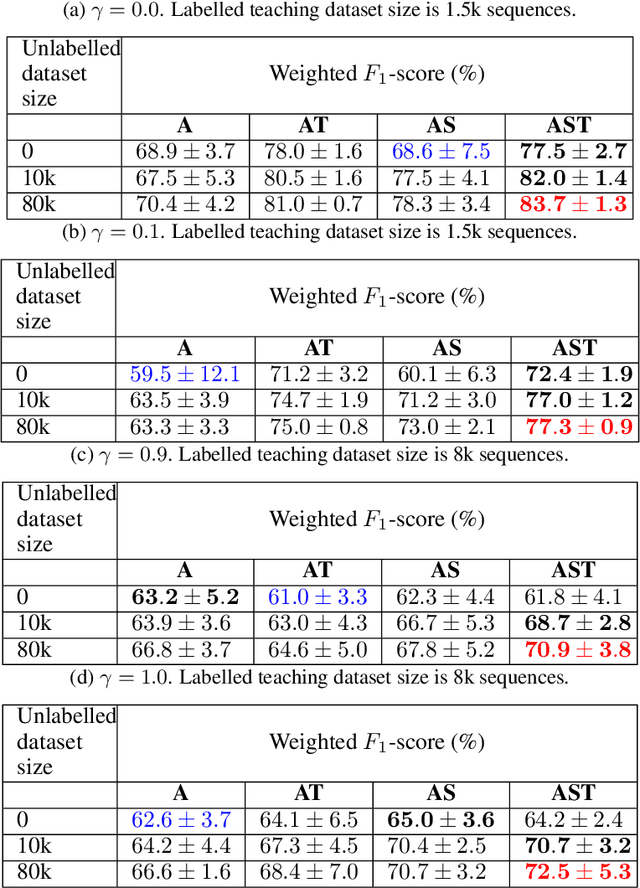

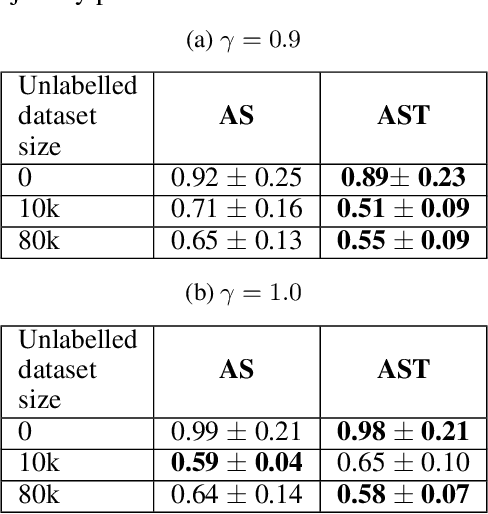
Abstract:Learning motor skills for sports or performance driving is often done with professional instruction from expert human teachers, whose availability is limited. Our goal is to enable automated teaching via a learned model that interacts with the student similar to a human teacher. However, training such automated teaching systems is limited by the availability of high-quality annotated datasets of expert teacher and student interactions that are difficult to collect at scale. To address this data scarcity problem, we propose an approach for training a coaching system for complex motor tasks such as high performance driving via a Multi-Task Imitation Learning (MTIL) paradigm. MTIL allows our model to learn robust representations by utilizing self-supervised training signals from more readily available non-interactive datasets of humans performing the task of interest. We validate our approach with (1) a semi-synthetic dataset created from real human driving trajectories, (2) a professional track driving instruction dataset, (3) a track-racing driving simulator human-subject study, and (4) a system demonstration on an instrumented car at a race track. Our experiments show that the right set of auxiliary machine learning tasks improves performance in predicting teaching instructions. Moreover, in the human subjects study, students exposed to the instructions from our teaching system improve their ability to stay within track limits, and show favorable perception of the model's interaction with them, in terms of usefulness and satisfaction.
MAVERIC: A Data-Driven Approach to Personalized Autonomous Driving
Jan 20, 2023
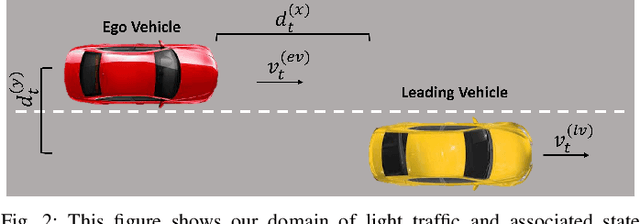
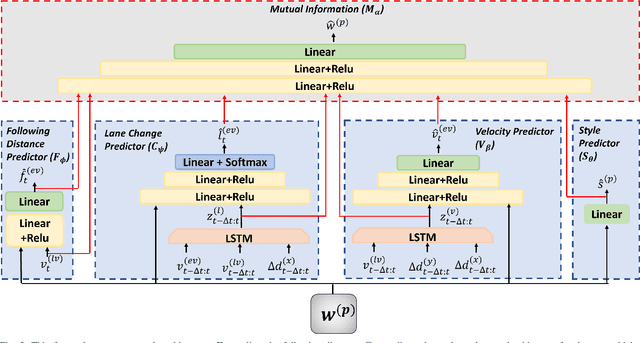
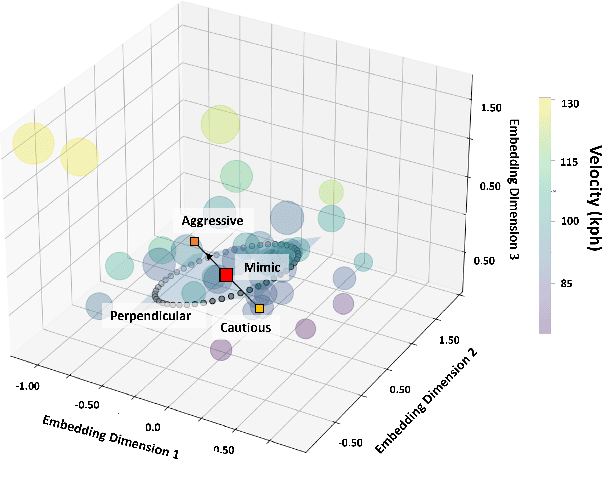
Abstract:Personalization of autonomous vehicles (AV) may significantly increase trust, use, and acceptance. In particular, we hypothesize that the similarity of an AV's driving style compared to the end-user's driving style will have a major impact on end-user's willingness to use the AV. To investigate the impact of driving style on user acceptance, we 1) develop a data-driven approach to personalize driving style and 2) demonstrate that personalization significantly impacts attitudes towards AVs. Our approach learns a high-level model that tunes low-level controllers to ensure safe and personalized control of the AV. The key to our approach is learning an informative, personalized embedding that represents a user's driving style. Our framework is capable of calibrating the level of aggression so as to optimize driving style based upon driver preference. Across two human subject studies (n = 54), we first demonstrate our approach mimics the driving styles of end-users and can tune attributes of style (e.g., aggressiveness). Second, we investigate the factors (e.g., trust, personality etc.) that impact homophily, i.e. an individual's preference for a driving style similar to their own. We find that our approach generates driving styles consistent with end-user styles (p<.001) and participants rate our approach as more similar to their level of aggressiveness (p=.002). We find that personality (p<.001), perceived similarity (p<.001), and high-velocity driving style (p=.0031) significantly modulate the effect of homophily.
Machine learning reveals how personalized climate communication can both succeed and backfire
Sep 10, 2021
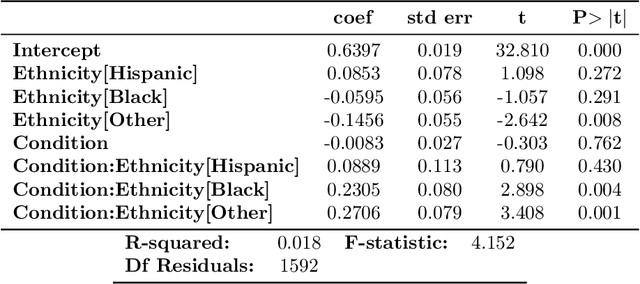

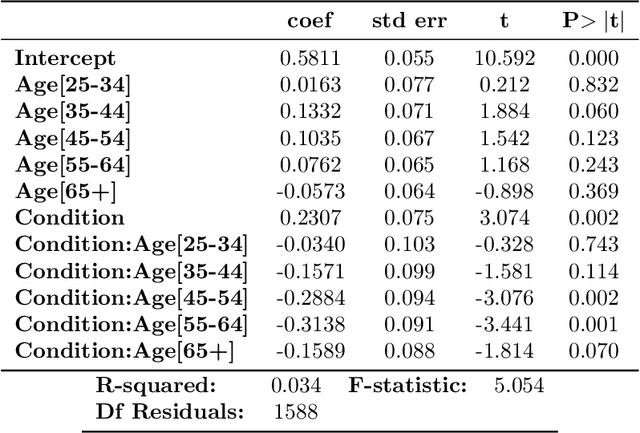
Abstract:Different advertising messages work for different people. Machine learning can be an effective way to personalise climate communications. In this paper we use machine learning to reanalyse findings from a recent study, showing that online advertisements increased some people's belief in climate change while resulting in decreased belief in others. In particular, we show that the effect of the advertisements could change depending on people's age and ethnicity.
 Add to Chrome
Add to Chrome Add to Firefox
Add to Firefox Add to Edge
Add to Edge